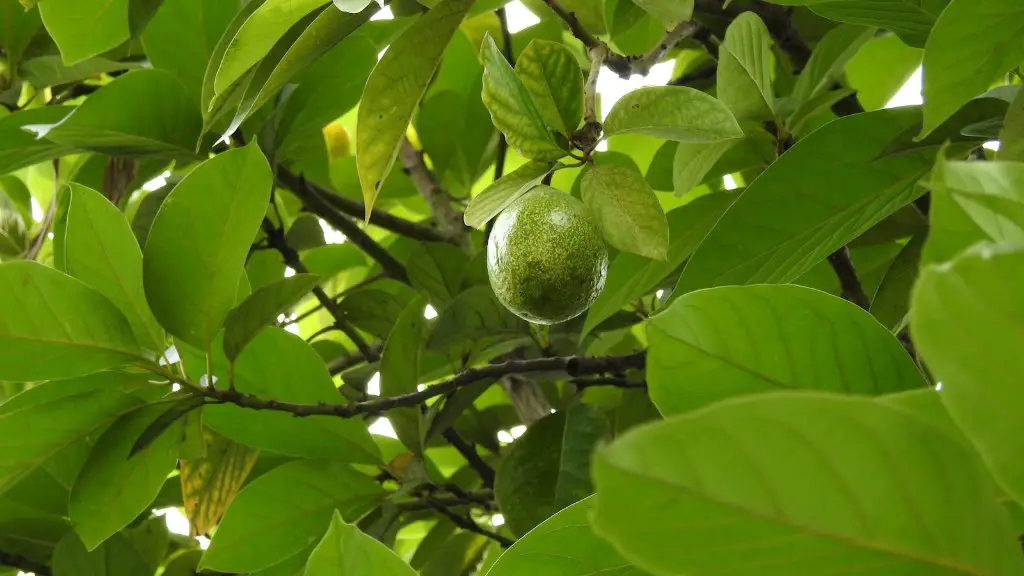Overview
Avocados are a great addition to the garden and make a tasty snack. It’s easy to transfer an avocado tree from a pot to the ground, however, it’s important to do it correctly. Failure to take the right steps can cause the tree not to take its new position, or in the worst-case scenario, die. Therefore planning, preparation and careful attention to detail are essential. A few basic steps will help ensure your avocado tree is transferred successfully to its new home.
Planning and Preparing the Ground
The first step when transferring an avocado tree from pot to ground is to plan and prepare the chosen spot. As avocados like a sandy-loam soil with a balanced pH of 6.5 to 7.0, it’s important to check the soil condition with a pH test before transferring the tree. It’s also important to consider the sunlight and water requirements of the avocado tree when choosing a location. It’s best to pick a spot that receives four to six hours of direct sunlight every day and also has good drainage. Once the soil is prepared and all the elements are in place, the planning process is complete and the transfer can begin.
Digging the Hole
The next step in the transfer process is to dig the hole. Start by digging a hole at least twice the diameter of the pot the avocado tree is currently growing in. Make the hole nearly as deep as the pot, with a few extra inches to account for the several inches of roots that will be added to the hole. After the hole is dug, loosen and gently break up the soil with a shovel. This helps the roots take to their new soil more easily, without too much shock.
Getting Ready to Transfer the Tree
Before transferring the tree, fill the hole with two inches of composted material and some water. This supports the roots while they acclimate to the new soil and helps with root drainage. Once the hole is ready, gently remove the avocado tree from the pot and place it in the prepared hole. You may need to adjust the size of the hole if the roots don’t fit, but it’s important to avoid damaging them when doing so.
Moving the Tree Into Place
Once the roots are placed in the bottom of the hole, it’s time to set the avocado tree into place. Start by starting approximately three inches of soil around the roots. Make sure the soil buries the roots but isn’t too dense or close. Be sure to tamp down the soil to prevent air pockets from forming.
Adding Final Touches
Once the avocado tree is in place, water the roots twice and then add a layer of mulch to prevent weeds and hold in moisture. Also, prune any dead or damaged branches before transferring the tree, as it’s easier to do so when it’s still in the pot. This will ensure the avocado tree will have the best start to its new home.
Checking the Avocado Tree
Once the transfer is complete, it’s important to check the avocado tree regularly to make sure it’s doing okay. A sickly avocado tree may be due to improper soil or a lack of water. Check for yellow leaves, drooping branches, and root rot, and provide additional water as needed.
Nutrient Management
It’s important to maintain a regular fertilizer routine to support the tree’s health and fruit production. It’s best to fertilize with a balanced fertilizer specifically designed for avocados. Liquid fertilizers should be used once every two weeks during the growing season starting when the avocado tree begins to bloom. Just be sure not to over-fertilize, as that can also damage the tree.
Maintaining Moisture
Since avocado trees don’t tolerate dry soil very well, maintaining the right level of moisture is essential in helping them grow. Water your avocado tree twice a week during the spring and summer, and once a week during the winter, depending on your local rainfall. It’s important to check the soil moisture before each watering to determine if it needs more than just an irrigation.
Pest and Disease Management
Avocados are prone to various pests and disease, so you should check your tree regularly for signs of infestation or infection. Common pests include mealybugs, aphids, spider mites, and scale insects, while common diseases include anthracnose, root rot, and verticillium wilt. If pests or disease are found, then contact a local nursery or agricultural expert as soon as possible.
Controlling Weeds
Weeds can be one of the most damaging things to an avocado tree, as they compete with the tree for nutrients and light. Checking the soil around the tree regularly and removing any weeds as soon as possible can help control the problem. An additional layer of mulch around the tree can also help impede weed growth in the long run.
Pruning and Training
Avocado trees should be pruned and trained when they are young to promote structural strength and better fruit production. Start by cutting back any branches that are overly long or showing excessive growth. This will help keep the tree’s shape and also reduce the risk of insect or disease damage. Additionally, use pruning shears to shape the main trunk or limbs. This will also open the tree up, allowing sunlight and air to reach the inside reaches of the tree.
Encouraging Fruit Production
Finally, if you’re looking to maximize fruit production, the best way to encourage healthy avocado tree growth is with a balanced fertilizer. Applying a fertilizer specifically designed for avocados is the best way to ensure your avocado tree will have all the essential nutrients it needs to thrive and produce fruit.


